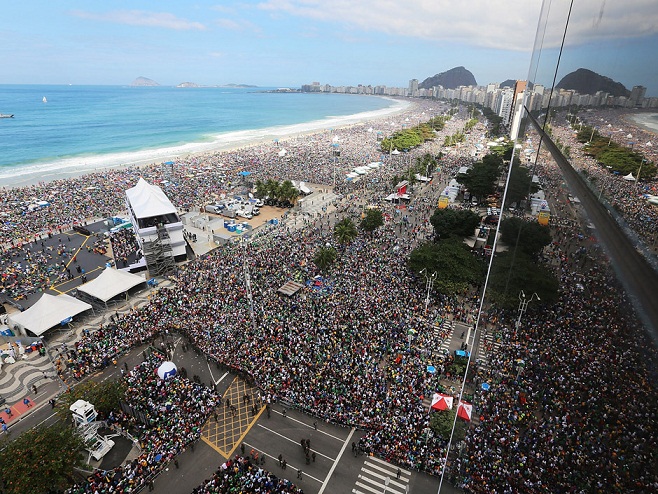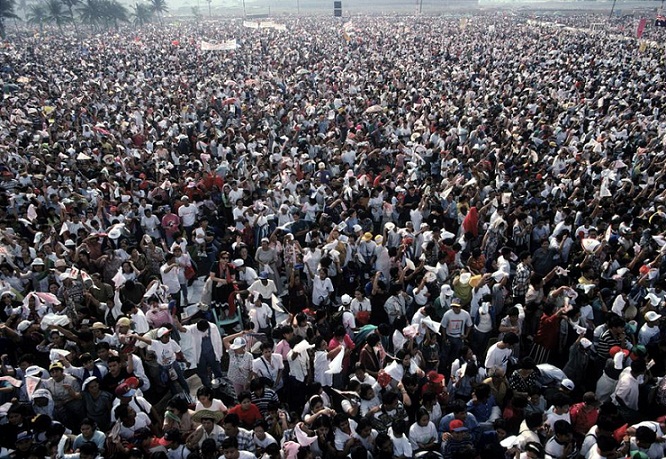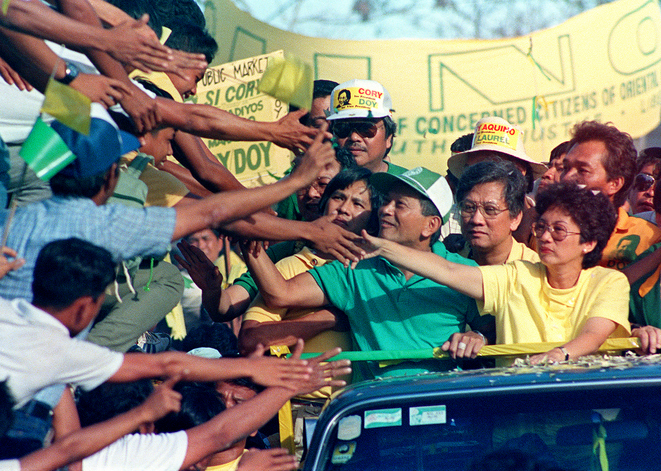
Pope Francis July 28 mass in Copacabana beach. Photo by Mario Tama, Getty Images. From National Post online..
There is more to the size of the crowd than just numbers.
Associated Press ran a story of Pope Francis July 28 Copacabana mass that concluded his highly successful visit in Brazil. A native of Argentina, the Brazil visit that capped the 2014 World Youth day, was his first in Latin America.
Press reports, quoting official figures by Vatican, said the Copacabana mass was attended by three million.
The reports said, in the history of Papal visits, only the five million Philippine crowds at the Rizal park mass of Pope John Paul II in 1995 topped the number of assembled Catholics at the Copacabana beach.
(Although the Rizal Park crowd is no doubt mammoth, there are some technical people who cast doubt on the five million estimate as that would have meant people standing close to each other with hardly a breathing space on the streets up to Pasay City. But it still feels good that the Philippine’s record in welcoming the Pope has remained unmatched.)

Unmatched. 1995 visit of Pope John Paul II in the Philippines. Photo by Hiroji Kubota. Magnum Photos.
AP, however, raised the impossibility of the three million figure. “By the Vatican’s count, the crowd density throughout the entire area would have been 7.4 people per square meter, which wouldn’t allow for movement of any kind, let alone the jumping, arm waving, singing and dancing seen at the papal events. Video and photos of the crowd also showed that while it was packed close to the gigantic altar built on Copacabana beach, the faithful thinned out along the 4-kilometer long beach.”
AP sought the opinion of Datafolha, one of Brazil’s top polling and statistic firms, which put the size of the July 28 crowd at between 1.2 million and 1.5 million people.
AP quoted Clark McPhail, an emeritus professor of sociology at the University of Illinois who has studied crowd counts for four decades as saying “It’s an old, old story that organizations, whether political radicals or the Vatican, always over-guesstimate the size of turnout, they want their event to look as good as possible.”
One is not surprised to get bloated figures from political organizations but does welcome that from a religious institution that preaches honesty.
AP said “A big crowd estimate would surely be a boon to the pontiff’s supporters, who would argue that the multitudes gave him a popular mandate to battle entrenched Vatican officials who don’t look kindly upon Francis’ drive to reform the church’s opaque and scandal-ridden bureaucracy.”
For Brazil, AP said, “ The bloated crowd figure also provided cover for city officials in Rio, where logistical problems seen during the papal visit brought into question the city’s ability to host 2014 World Cup group stage and championship matches, not to mention the 2016 Olympics.
“Those attending the papal events complained about the city’s woeful public transport system, a lack of affordable hotel rooms, the need for public toilets and a local services industry not able to meet demands for things as simple as lunch. A miraculously high crowd count would make all that more understandable and give local officials breathing room.”
Media, of course, should have done better than take unquestioningly the figures fed by the host country and Vatican.
Usually reporters use the Jacob’s formula in estimating crowds which is, in a loose crowd, where people are at an arm’s length of each other, one person in an area of about 10 square feet. In a tighter crowd, it’s about half that, or 5 square feet. In a packed crowd, it’s more like 2.5 square feet.
The formula was originated by Herbert A. Jacobs, a journalist for the Milwaukee Journal and later a professor of journalism at the University of California, Berkeley who covered the protest rallies during the Vietnam War in the 60s.
The size of the crowd is important in rallies during political campaigns because to candidates, it’s a reflection of their voters’ pull. They need an impressive shot of their rallies to create the much-desired bandwagon.
During the 1986 snap election campaign between Ferdinand Marcos and Cory Aquino, a reporter of the government-owned Philippine News Agency was in a dilemma, how to save his stories of huge crowd coming to Aquino’s rallies from being killed by his editors.
There were no internet nor fax machines at that time and we were filing our stories from the provinces by RCPI or Clavecilla phones. I was standing in line, next to him, for the phone and I could hear the story he was dictating. I noticed that his estimate of the crowd size was more than double the size that we saw and I asked him why after he put down the phone.
He explained: “My editors will surely cut into half the size of the crowd in my story. Our readers will get the correct report.”
A smart reporter.
